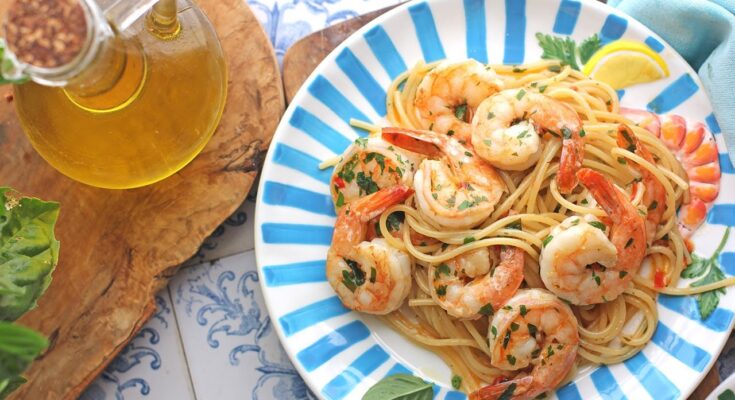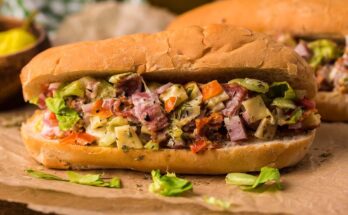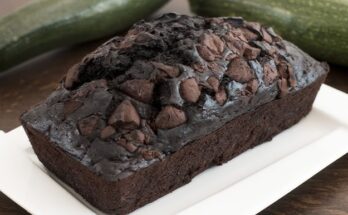Shrimp Scampi Pasta Recipe: Shrimp Scampi Pasta is one of those mouthwatering dishes that always seems to hit the spot. Whether you’re throwing together a quick weeknight dinner or trying to impress guests with minimal effort, this dish brings the flavor, elegance, and simplicity all in one go. But what exactly makes Shrimp Scampi Pasta such a beloved staple in homes and restaurants alike?
First off, it’s all about that luscious, garlicky, buttery sauce paired with perfectly cooked shrimp and al dente pasta. The aroma alone can make your stomach growl. Plus, it’s incredibly fast to make—like 30 minutes or less fast—without compromising on taste.
What Makes Shrimp Scampi So Popular?
This dish is a winner because it checks all the boxes. It’s:
- Quick and easy to prepare.
- Made with simple ingredients most people already have at home.
- Packed with flavor from garlic, lemon, butter, and fresh herbs.
- Fancy enough for date night but simple enough for a family dinner.
What’s not to love? You get tender, juicy shrimp drenched in a sauce that’s both zesty and rich, layered over strands of pasta that soak up all that flavor. It’s a cozy yet sophisticated dish that can be dressed up or down, depending on the occasion.
Origin and Background of the Dish
Scampi originally refers to a type of crustacean known as langoustine, native to the Mediterranean and northeastern Atlantic. In Italian-American cooking, however, “scampi” evolved into more of a method—typically involving shrimp sautéed in garlic, butter, lemon juice, and white wine. When combined with pasta, it creates an irresistible one-dish meal.
The adaptation of the classic Italian shrimp dish into the pasta-rich version we know today is largely credited to Italian immigrants who modified traditional recipes with ingredients more readily available in the United States. Over time, this created the fusion comfort food we all know and love—Shrimp Scampi Pasta.
Ingredients You’ll Need
Before you dive into cooking, let’s talk ingredients. This recipe shines when you use fresh, high-quality components. But don’t worry—we’ll also discuss substitutes in case you’re working with what you’ve got at home.
Main Ingredients Breakdown
Here’s your grocery list for a classic Shrimp Scampi Pasta:
- Shrimp (1 pound, peeled and deveined): Fresh or frozen shrimp both work; just make sure to thaw properly if using frozen.
- Pasta (8 oz linguine or spaghetti): Choose your favorite long pasta.
- Garlic (4–6 cloves, minced): The more, the better for flavor!
- Butter (4 tbsp): For that rich and creamy sauce.
- Olive oil (2 tbsp): Helps sauté the garlic and shrimp.
- White wine (½ cup): Adds a lovely depth; dry varieties like Sauvignon Blanc or Pinot Grigio work great.
- Lemon juice (2 tbsp): Brightens the dish with fresh citrus.
- Red pepper flakes (½ tsp): Optional, for a bit of heat.
- Fresh parsley (¼ cup, chopped): Adds color and freshness.
- Salt and black pepper: To taste.
- Grated Parmesan (optional): For topping.
These ingredients come together in perfect harmony, creating that savory, lemony, buttery sauce that clings beautifully to every noodle.
Substitutes and Add-ons
Maybe you’re missing a couple of things or just want to mix it up. No problem! Here are a few swaps and additions you can consider:
- No white wine? Use chicken broth with a splash of vinegar or lemon juice.
- Don’t eat shrimp? Try scallops, chicken, or a mix of veggies.
- Want more richness? Add a splash of heavy cream to the sauce.
- Low on garlic? Garlic powder works in a pinch but won’t offer the same depth.
- Gluten-free? Swap with your favorite gluten-free pasta.
Feel free to get creative while staying within the basic flavor profile. The flexibility of this recipe is one reason it’s so popular.
Essential Kitchen Tools for This Recipe
You don’t need a gourmet kitchen to pull off Shrimp Scampi Pasta, but having the right tools on hand makes the process smoother and more enjoyable.
Must-Have Cooking Equipment
Here are the basics you’ll need:
- Large pot: For boiling pasta.
- Large skillet or sauté pan: Preferably with high sides to accommodate the sauce and shrimp comfortably.
- Tongs or pasta fork: Helps toss the pasta with the sauce without breaking the noodles.
- Colander: To drain the pasta.
- Knife and cutting board: For prepping garlic, parsley, and shrimp.
These are the essential tools for getting the job done right, especially when working with fast-cooking ingredients like shrimp and garlic.
Nice-to-Have Tools for a Better Experience
Want to upgrade your cooking experience? Consider these:
- Zester or microplane: For getting that perfect lemon zest.
- Shrimp deveiner tool: Makes cleaning shrimp quicker and easier.
- Garlic press: Speeds up prep and gives you finely minced garlic every time.
- Wine opener: If you’re using real wine, don’t forget this one!
While not mandatory, these tools help streamline the process and add a bit of fun to your kitchen routine.
Preparing the Shrimp Properly
Let’s be real—no one likes rubbery or gritty shrimp. Prepping them the right way is essential to nailing this recipe.
How to Clean and Devein Shrimp
Cleaning shrimp may not be the most glamorous part of cooking, but it’s crucial. Here’s how to do it:
- Peel: If your shrimp still have their shells, peel them off but leave the tails on for presentation if you like.
- Devein: Use a paring knife or a deveining tool to cut a shallow line along the back of the shrimp. Pull out the dark vein (it’s the digestive tract).
- Rinse: Give your shrimp a quick rinse under cold water and pat dry with paper towels.
This ensures your shrimp are clean, tender, and ready to absorb all that garlic butter goodness.
Marinating the Shrimp for Extra Flavor
For added depth, you can marinate the shrimp for 15–30 minutes before cooking. Here’s a simple marinade:
- 2 tablespoons olive oil
- Juice of ½ lemon
- 2 cloves garlic (minced)
- Pinch of salt and pepper
Just toss the shrimp in the mix and let it sit in the fridge. This small step can make a big difference in flavor.
Cooking the Perfect Pasta
Even the best sauce in the world won’t save overcooked or undercooked pasta. Here’s how to get it right every time.
Choosing the Right Type of Pasta
Traditionally, shrimp scampi pairs beautifully with long pasta like:
- Linguine: The gold standard.
- Spaghetti: A classic and accessible option.
- Angel hair: Great if you prefer a lighter bite.
- Fettuccine: A bit heartier and great for soaking up sauce.
Choose based on your texture preference. Each option brings something slightly different to the table.
Pasta Cooking Tips for Perfect Texture
- Use plenty of water: About 4-6 quarts per pound of pasta.
- Salt the water generously: It should taste like the sea.
- Stir often: Prevents sticking.
- Cook until al dente: This means the pasta is tender but still has a bite.
- Reserve some pasta water: Save about 1 cup before draining to help emulsify your sauce later.
Cooking the pasta just right ensures it complements the scampi sauce rather than getting lost in it.
Making the Scampi Sauce
Once your shrimp are prepped and your pasta is almost done, it’s time to focus on the star of the show—the scampi sauce. This sauce is all about balance: rich butter, pungent garlic, zesty lemon, and a hint of spice coming together to create a flavor explosion.
Building the Base of Flavor
Start by heating olive oil and butter in a large skillet over medium heat. Add the minced garlic and a pinch of red pepper flakes, stirring constantly for about 30 seconds. You want the garlic fragrant, not burnt.
Next, add the shrimp in a single layer. Cook for about 1-2 minutes per side until pink and opaque. Be careful not to overcook—shrimp can go from perfect to rubbery in seconds.
Once the shrimp are done, remove them from the skillet and set aside. Now, pour in the white wine (or chicken broth substitute) and scrape up any brown bits stuck to the bottom. Let the wine simmer for 2-3 minutes to reduce slightly.
Adding the Finishing Touches
To the reduced wine, stir in the lemon juice and a bit more butter. Let it melt down to form a silky, glossy sauce. Return the shrimp to the skillet and toss them gently in the sauce to coat.
Pro tip: Add a few tablespoons of the reserved pasta water now—it helps the sauce cling better to the pasta and adds a bit of starchy richness.
Taste and adjust your seasoning with salt and pepper as needed. Want more zing? Add a touch more lemon juice or zest. Prefer a creamy version? Splash in a little cream here and stir to combine.
Combining Pasta and Sauce
Now comes the part where everything comes together into one delicious plate of pasta heaven.
Tossing It All Together Like a Pro
Add your drained pasta directly into the skillet with the shrimp and scampi sauce. Using tongs, gently toss everything together until the pasta is well coated. If the mixture feels a little dry, add more reserved pasta water a splash at a time.
Be sure each strand of pasta is glossy with sauce and each shrimp is evenly distributed. This dish isn’t just about taste—it’s about that gorgeous presentation of shrimp nestled in garlicky noodles.
If you’re using Parmesan, now’s the time to sprinkle some in. Stir again gently. The cheese melts slightly, adding another layer of richness.
Letting It Rest and Garnishing
Once everything is combined, let the pasta rest in the pan for 2-3 minutes off the heat. This allows the flavors to mingle and the sauce to cling beautifully.
Plate your pasta and top it with fresh chopped parsley, lemon zest, and extra Parmesan if desired. Serve it hot, and don’t forget the crusty bread on the side—perfect for soaking up any leftover sauce.
Tips and Tricks for a Restaurant-Style Finish
Everyone loves that “wow” factor when a homemade dish tastes like it came from a five-star kitchen. Here are a few tips to take your Shrimp Scampi Pasta to the next level:
How to Avoid Overcooking Shrimp
Shrimp cook incredibly fast—typically within 3-4 minutes total. Keep an eye on them and remove them from the pan the moment they turn pink and firm. If they keep cooking in the hot sauce, they’ll become rubbery.
Enhancing Flavor with Small Adjustments
- A pinch of sugar can balance out too much acidity from the lemon.
- Add zest before juice for a more fragrant citrus note.
- Use freshly cracked pepper for better aroma and spice.
- Add a splash of reserved pasta water at the end to loosen the sauce if needed.
Making It Your Own
Don’t be afraid to tweak the recipe:
- Toss in cherry tomatoes for a burst of sweetness.
- Add a handful of spinach at the end for color and nutrients.
- Swap out shrimp for scallops or grilled chicken.
- Sprinkle crushed pistachios or pine nuts for a nutty twist.
Shrimp Scampi Pasta is forgiving and adaptable. The goal is to make it delicious your way.
Serving Suggestions
Shrimp Scampi Pasta is a dish that can easily stand on its own, but with the right sides and drinks, you can turn it into a full-blown gourmet experience. Whether you’re cooking for a quiet evening in or hosting a dinner party, thoughtful pairings can elevate the entire meal.
Best Side Dishes to Complement the Pasta
- Garlic Bread or Baguette: This is a no-brainer. Crusty bread is perfect for mopping up every last bit of that buttery scampi sauce.
- Simple Green Salad: A light arugula or mixed greens salad with a lemon vinaigrette offers a refreshing contrast to the richness of the pasta.
- Roasted Vegetables: Asparagus, zucchini, or broccoli roasted with olive oil and sea salt bring color and texture to the plate.
- Grilled Artichokes or Bruschetta: Great starters that don’t overpower the shrimp flavors.
Pairing these sides keeps the meal light and well-balanced while adding a bit of variety to your table.
Ideal Wines and Beverages
Since shrimp scampi has a rich, lemony, and garlicky base, wines that offer bright acidity and crispness work best.
- White Wines: A glass of chilled Sauvignon Blanc, Pinot Grigio, or Chardonnay complements the citrusy notes beautifully.
- Sparkling Water with Lemon: For a non-alcoholic option, this keeps your palate fresh and cuts through the richness.
- Light Beer: A lager or pilsner can also work surprisingly well with shrimp dishes.
Serving the right drink makes each bite of pasta taste even better.
Storing and Reheating Tips
So, you made a big batch (or maybe you doubled the recipe on purpose—smart move). Let’s talk about how to save and reheat your shrimp scampi without losing all that flavor and texture.
How to Store Leftovers Properly
- Cool Completely: Let the pasta cool before storing to avoid condensation.
- Use Airtight Containers: Store in a glass or plastic container with a tight-fitting lid.
- Refrigerate: Keeps well in the fridge for up to 2–3 days.
- Freeze with Caution: You can freeze it, but shrimp tend to get rubbery when reheated from frozen, and the pasta can become mushy.
Best Reheating Practices
Reheat gently to avoid overcooking the shrimp:
- Stovetop Method: Add a splash of water or broth to a skillet, then toss the pasta over medium-low heat until warmed through.
- Microwave Method: Place in a microwave-safe bowl with a damp paper towel on top. Heat in short bursts, stirring in between.
Avoid reheating more than once, as the shrimp will lose its texture and flavor quickly.
Health Benefits of Shrimp Scampi Pasta
While it’s definitely an indulgent dish, shrimp scampi pasta has a few redeeming health qualities—especially when made with fresh, wholesome ingredients.
Nutritional Highlights
- High in Protein: Shrimp are a lean, low-calorie source of protein that supports muscle growth and repair.
- Rich in Vitamins: Shrimp provide vitamin B12, iodine, and selenium—nutrients essential for energy, thyroid health, and immunity.
- Garlic Benefits: Garlic is loaded with antioxidants and has anti-inflammatory properties.
- Lemon Juice: Adds vitamin C, which boosts immune health and digestion.
To lighten things up, you can always reduce the butter, opt for whole wheat pasta, or add more vegetables to boost fiber and nutrients.
Common Mistakes to Avoid
Cooking shrimp scampi pasta is easy, but a few common missteps can turn your masterpiece into a mess. Here’s what to steer clear of:
Overcooking Shrimp or Pasta
This is the number one mistake. Always cook shrimp just until they turn pink, and pull pasta off the heat while it’s still al dente.
Using Too Much Lemon or Garlic
Yes, garlic and lemon are essential, but too much of either can overpower the dish. Aim for balance and always taste as you go.
Skipping the Pasta Water
That starchy pasta water isn’t just waste—it’s liquid gold. It helps create a silky sauce that clings to your noodles perfectly.
Adding Cold Shrimp to the Pan
If your shrimp are straight from the fridge, let them sit at room temperature for 10-15 minutes. Cold shrimp will lower the pan’s temperature and can result in uneven cooking.
FAQs about Shrimp Scampi Pasta Recipe
1. What ingredients do I need for Shrimp Scampi Pasta?
To whip up a delicious Shrimp Scampi Pasta, you’ll need large shrimp (peeled and deveined), pasta (like spaghetti or linguine), butter, garlic, white wine, lemon juice, parsley, red pepper flakes, salt, and pepper. Optionally, you can add grated Parmesan cheese for a richer flavor.
2. How long does it take to cook Shrimp Scampi Pasta?
The total cooking time for Shrimp Scampi Pasta is typically around 20-30 minutes. This includes the time to boil the pasta and sauté the shrimp along with the sauce ingredients.
3. Can I use frozen shrimp for this recipe?
Absolutely! Frozen shrimp can be used for this recipe. Just make sure to thaw them properly before cooking to ensure even cooking and the best flavor.
4. Is Shrimp Scampi Pasta suitable for health-conscious eaters?
Shrimp Scampi Pasta can be adapted for a healthier diet by using whole wheat pasta, reducing the butter amount, or substituting it with olive oil. Shrimp is a great source of protein and can be part of a balanced diet.
5. What type of wine works best in Shrimp Scampi Pasta?
A dry white wine, such as Pinot Grigio or Sauvignon Blanc, is ideal for Shrimp Scampi Pasta. These wines add the perfect acidity and depth to the sauce without overpowering the shrimp.
6. How can I store leftover Shrimp Scampi Pasta?
Leftover Shrimp Scampi Pasta can be stored in an airtight container in the refrigerator for up to two days. Reheat gently, adding a little extra butter or olive oil to refresh the sauce.
7. What are some good side dishes to serve with Shrimp Scampi Pasta?
A simple green salad, garlic bread, or steamed vegetables like asparagus or broccoli pair beautifully with Shrimp Scampi Pasta, balancing the meal with light and refreshing flavors.
Conclusion
Shrimp Scampi Pasta is more than just a dish—it’s an experience. It brings together vibrant flavors, comforting textures, and the kind of aroma that makes everyone peek into the kitchen asking, “What smells so good?” With its simple ingredients and easy steps, anyone can whip up this crowd-pleaser in under 30 minutes.
Whether you’re cooking it for yourself after a long day or serving it to guests at a weekend dinner party, this dish delivers every time. Follow this step-by-step guide, personalize it with your favorite add-ins, and enjoy every buttery, garlicky, lemony bite.



